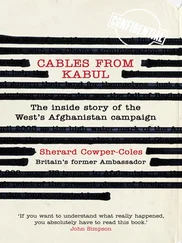Andrew Sorkin - Too Big to Fail - The Inside Story of How Wall Street and Washington Fought to Save the FinancialSystem--and Themselves
Здесь есть возможность читать онлайн «Andrew Sorkin - Too Big to Fail - The Inside Story of How Wall Street and Washington Fought to Save the FinancialSystem--and Themselves» весь текст электронной книги совершенно бесплатно (целиком полную версию без сокращений). В некоторых случаях можно слушать аудио, скачать через торрент в формате fb2 и присутствует краткое содержание. Жанр: Старинная литература, на английском языке. Описание произведения, (предисловие) а так же отзывы посетителей доступны на портале библиотеки ЛибКат.
- Название:Too Big to Fail: The Inside Story of How Wall Street and Washington Fought to Save the FinancialSystem--and Themselves
- Автор:
- Жанр:
- Год:неизвестен
- ISBN:нет данных
- Рейтинг книги:4 / 5. Голосов: 1
-
Избранное:Добавить в избранное
- Отзывы:
-
Ваша оценка:
- 80
- 1
- 2
- 3
- 4
- 5
Too Big to Fail: The Inside Story of How Wall Street and Washington Fought to Save the FinancialSystem--and Themselves: краткое содержание, описание и аннотация
Предлагаем к чтению аннотацию, описание, краткое содержание или предисловие (зависит от того, что написал сам автор книги «Too Big to Fail: The Inside Story of How Wall Street and Washington Fought to Save the FinancialSystem--and Themselves»). Если вы не нашли необходимую информацию о книге — напишите в комментариях, мы постараемся отыскать её.
Too Big to Fail: The Inside Story of How Wall Street and Washington Fought to Save the FinancialSystem--and Themselves — читать онлайн бесплатно полную книгу (весь текст) целиком
Ниже представлен текст книги, разбитый по страницам. Система сохранения места последней прочитанной страницы, позволяет с удобством читать онлайн бесплатно книгу «Too Big to Fail: The Inside Story of How Wall Street and Washington Fought to Save the FinancialSystem--and Themselves», без необходимости каждый раз заново искать на чём Вы остановились. Поставьте закладку, и сможете в любой момент перейти на страницу, на которой закончили чтение.
Интервал:
Закладка:
There were also a number of other men in the room whom Fuld stopped to shake hands with but didn’t know well—though little did he suspect they would soon become major figures in his life. One was an American banker named Bob Diamond, who ran Barclays Capital, the investment banking arm of the British financial behemoth. Fuld had spoken with him a handful of times, usually seeking donations for his favorite charities. Diamond was polite but noticeably cool as Fuld greeted him, perhaps because Fuld had once invited him over for a casual coffee, unaware that he was based in London, not New York—a little slight that Diamond had never forgotten. Fuld also briefly paid his respects to Diamond’s regulators, Alistair Darling, the head of Britain’s Treasury, and Mervyn King, the governor of the Bank of England. High finance was in general a very small world, though at this particular moment, none of them realized just how small it had become.
As he made his way through the crowd, Fuld kept an eye out for Paulson, whom he hoped to buttonhole before the dinner began. But it was Paulson, wearing a blue suit that seemed one size too big for him, who spotted Fuld first. “You guys are really working hard over there,” Paulson told him, grasping his hand. “The capital raise was the right thing to do.”
“Thanks,” Fuld said. “We’re trying.”
Paulson also expressed his gratitude for the “thoughtful” dialogue that had been initiated among Tom Russo, Lehman’s general counsel, and Rick Rieder, who ran Lehman’s global principal strategies group, with Paulson’s deputy, Bob Steel, and Senator Judd Gregg. Russo had been advocating a plan in which the government would create a special facility—what Russo called a “good bank” proposal—to help provide additional liquidity to Wall Street firms by creating a backstop for their most toxic assets, but he had met resistance. It would simply look too much like another bailout, and Washington wasn’t ready for that—not yet.
“I am worried about a lot of things,” Paulson now told Fuld, singling out a new IMF report estimating that mortgage-and real estate-related write-downs could total $945 billion in the next two years. He said he was also anxious about the staggering amount of leverage—the amount of debt to equity—that investment banks were still using to juice their returns. That only added enormous risk to the system, he complained.
The numbers in that area were indeed worrisome. Lehman Brothers was leveraged 30.7 to 1; Merrill Lynch was only slightly better, at 26.9 to 1. Paulson knew intuitively that Wall Street’s leverage problem could not end well. He also knew that the firms would never rein themselves in; they were all blindly chasing one another. He always reminded himself of a remarkably telling question that Charles Prince, the CEO of Citigroup, had asked him the year before at a similar dinner: “Isn’t there something you can do to order us not to take all of these risks?”
Paulson was worried not just about Lehman; he knew Merill too was awash in bad assets, and mentioned the challenges that Merrill’s new CEO, John Thain (who had been Paulson’s number two at Goldman), was facing with his own balance sheet. But leverage and Merrill’s problems weren’t Fuld’s primary concern at the moment; he was still irked by the short-sellers and once again pressed Paulson to do something about them. If they could be contained, it would give Lehman and the other firms a chance to find their footing and get their balance sheets in order. But if the shorts were allowed to keep hammering away, the overall situation was only going to get a lot uglier.
As a former CEO himself, Paulson could understand Fuld’s frustration. Short-sellers cared only about their own profits and gave little thought to their impact on the system. “I’m sympathetic,” Paulson said. “If there are bad actors, we’ll put them out of business.”
But Paulson was also concerned that Fuld was using the short-sellers as an excuse to avoid addressing the genuine problems at Lehman. “You know, the capital raise, as good as it was, is just one thing,” Paulson told him. “It’s not going to end there.” He reminded him that the pool of potential buyers for Lehman was not a large one.
“Look, Dick,” he continued. “There aren’t a lot of people out there saying, ‘I have to have an investment banking franchise.’ You have to start thinking about your options.”
It was a not-so-subtle hint to start thinking about selling the entire firm. Although the conversation agitated Fuld slightly, they’d had similar discussions before, so he took Paulson’s advice in stride.
The group took their seats, and as each of the speakers rose to talk, the perilous state of the economy became ever clearer. The credit crisis wasn’t just a U.S. problem; it had spread globally. Mario Draghi, Italy’s central bank governor and a former partner at Goldman Sachs, spoke candidly of his worries about global money-market funds. Jean-Claude Trichet told the audience that they needed to come up with common requirements for capital ratios—the amount of money a firm needed to keep on hand compared to the amount it could lend—and, more important, leverage and liquidity standards, which he thought were much more telling indicators of a firm’s ability to withstand a “run on the bank.”
Mr. King, the governor of the Bank of England, offered perhaps the harshest assessment. “You are all bright people, but you failed. Risk management is hard,” he declared. “So the lesson is, we can’t let you get as big as you were and do the damage that you’ve done or get as complex as you were.”
That night, after Fuld had finally found his car and driver outside the Treasury Building, he thumbed out an e-mail on his BlackBerry to Russo. “Just finished the Paulson dinner,” Fuld wrote at 9:52 p.m.
A few takeaways//
1-we have huge brand with treasury
2-loved our capital raise
3-really appreciate u + Reiders work onm [ sic ] ideas
4-they want to kill the bad HFnds [hedge funds]+ heavily regulate the rest
5-they want all G7 countries to embrace
Mtm stnds [Mark-to-market standards]
Cap stnds
Lev + liquidity stnds
6-HP [Hank Paulson] has a worried view of ML [Merrill Lynch]
All in all worthwhile.
Dick

On the following Tuesday, April 15, Neel Kashkari and Phillip Swagel hurried down past the guard house of the Treasury Building to where Hank Paulson and Bob Steel were waiting for them in the secretary’s black Suburban. The group was due at the Federal Reserve in Foggy Bottom at 3:00 p.m.—in ten minutes—and was running late.
The two men made something of an odd couple. Kashkari, dark with a bald dome, still dressed like the investment banker he had recently been, while Swagel, pale with dark hair and glasses, looked more like a wonky government official. A former academic, he had kept fit and seemed younger than his thirty-four-year-old colleague, even though he was eight years older.
Paulson had invited his young advisers to a meeting with Ben Bernanke so that they could present a confidential memo that the two of them had authored—a memo that had far-reaching implications for the nation’s increasingly unsteady financial system.
At Paulson’s request, they had done nothing less than to formulate a plan for what to do in the event of a total financial meltdown, outlining the steps that the Treasury Department might have to take and the new powers it would require to stave off another Great Depression. They had given the proposal the provocative title “Break the Glass: Bank Recapitalization Plan.” Like a fire alarm enclosed in glass, it was intended to be used only in an emergency, though with each passing day, it appeared more and more likely that the proposal was no mere drill.
Читать дальшеИнтервал:
Закладка:
Похожие книги на «Too Big to Fail: The Inside Story of How Wall Street and Washington Fought to Save the FinancialSystem--and Themselves»
Представляем Вашему вниманию похожие книги на «Too Big to Fail: The Inside Story of How Wall Street and Washington Fought to Save the FinancialSystem--and Themselves» списком для выбора. Мы отобрали схожую по названию и смыслу литературу в надежде предоставить читателям больше вариантов отыскать новые, интересные, ещё непрочитанные произведения.
Обсуждение, отзывы о книге «Too Big to Fail: The Inside Story of How Wall Street and Washington Fought to Save the FinancialSystem--and Themselves» и просто собственные мнения читателей. Оставьте ваши комментарии, напишите, что Вы думаете о произведении, его смысле или главных героях. Укажите что конкретно понравилось, а что нет, и почему Вы так считаете.












